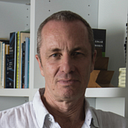On the “paradox” of hyperventilation
The name “Bohr” usually evokes one of the fathers of quantum mechanics, the famous Danish physicist Niels Bohr, who among other things enunciated the so-called complementarity principle, emphasizing the presence of dual aspects in our way of interacting and observing reality. Few know, however, that Niels’ father, Christian, was a physiologist, and that in 1904 he discovered an important effect underlying the physiology of breathing, which today bears his name, highlighting a somewhat paradoxical relationship between lung ventilation and oxygenation of the organism.
Practitioners of respiratory techniques certainly have an interest in knowing the Bohr effect, and other effects related to it, but I realized that it is rarely the case, even among experts, which gave me the stimulus to write this note. Let me start by saying that I am not a physiologist. What I am going to expose is therefore to be taken into consideration only in indicative terms, as an invitation to deepen the decidedly complex theme of human respiration.
More than thirty years ago, I approached a practice known today with the term of rebirthing, which uses intense breathing, without pauses, similar to the circular breathing of Yoga, of which we find traces in texts such as the Bhagavad Gita and the Vigyana Bhairava Tantra, and in traditions such as the Sufi. It is only a partial…
